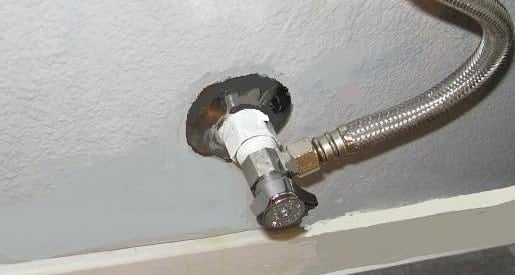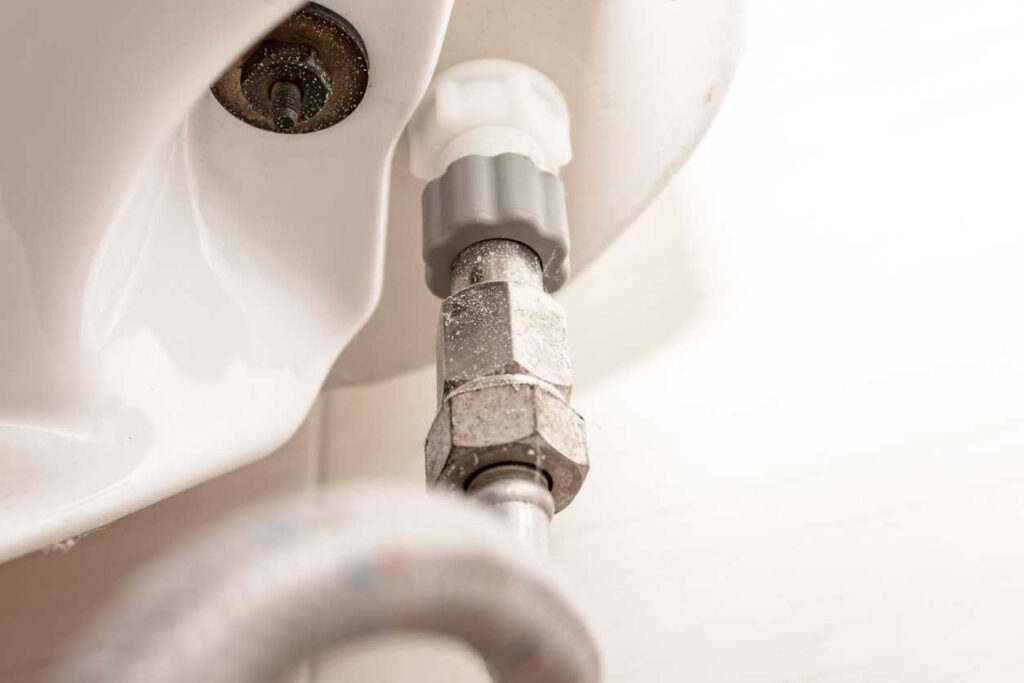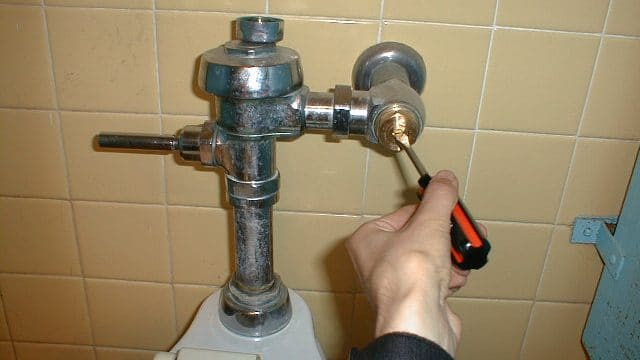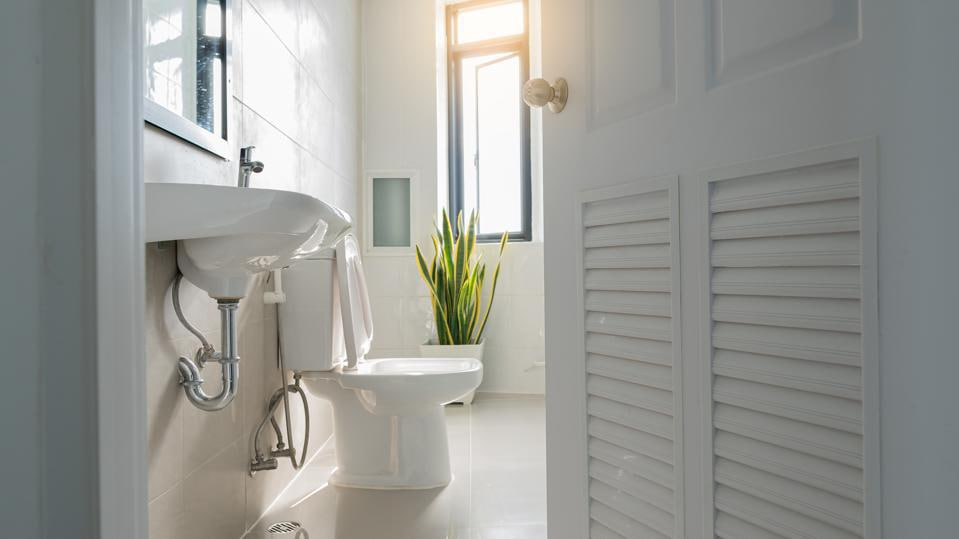How to turn off water to toilet? When you move into your new home, it’s important to pay attention to a few crucial details. An often overlooked detail is understanding how to turn off the water to your toilet. Located on the main shutoff valve for the house or beneath the TOILET itself, you’ll need to locate the shutoff valve and make sure you can shut off the water quickly and efficiently.
It’s always a good practice to inspect these shutoffs at least once a year so that when the time comes, you’ll be prepared and won’t be caught off guard by a leaky water pipe or faulty water valve. The main water supply shutoff valve is often located outside in the yard near where your main water supply enters your home; it pays to remember this location as well should an emergency arise.
Most of the time, you don’t have to worry about finding your toilet’s shut-off valve. However, if you’re facing issues such as a constantly running toilet, an empty tank, or insufficient flushing power due to a water flow problem, it’s important to be able to locate the valve and turn it clockwise to shut off the water.

The worst case scenario is when your toilet is overflowing and you attempt to find said valve–hopefully, by then you will already know where it is! In any event, if you can access it easily enough (unlike in an emergency!), try locating the valve for your own knowledge. If all else fails, familiarize yourself with knowing where the main water supply valve and outdoor faucet valves are located so that you can quickly turn off the main water in times of crisis
An overflowing toilet is a serious problem that can easily cause water damage, not only to the bathroom floor but possibly to other areas of the house depending on its location. In the event of an overflowing toilet, the valve clockwise should be checked first and opened if it has been shut off. If this valve fails to shut off the water then you will need to locate and use the main water supply valve.
If it’s too difficult or dangerous to access, then you can turn off the outdoor faucet valve, which will turn off all water within your home. Taking effective steps before it’s too late is crucial in preventing more extensive water damage.

How to turn off water to toilet?
Don’t let your toilet run wild! There are two simple ways to cut off its water supply. The first is with a specific dedicated shutoff valves valve for the system, and the second possibility involves access to your main shut-off switch. Put an end to any emergency overflow situation – take control of that toilet today!
When plumbing issues strike and the normal methods to shut off water don’t work, it can be challenging. However, there are many inventive ways you can solve this problem – just ask a professional plumber for some innovative ideas!
Knowing how to quickly turn off water to a toilet is essential for any homeowner. These directions will help you locate the dedicated shutoff valve, football-shaped valve or main house shutoff valve that controls the supply to your toilet. Start by locating the toilet shutoff valve on the wall behind the toilet, and then turn it clockwise all the way. Alternatively, you can prop up the football-shaped float or locate and turn off the main house shut off valve. Following these steps helps ensure that any eventuality that requires turning off your toilet’s water supply can be done in a timely manner and with minimal fuss.
Is your toilet misbehaving? Whether you’ve got a running loo, one that’s overflowed its banks or just need an upgrade, the first step is to shut off the water! To avoid making a big mess in your bathroom and ensure all repairs go smoothly it helps also to give everything time for draining out. Now let’s get things back on track!

1. HOW TURN OFF WATER TO THE TOILET USING THE TOILET SHUT OFF VALVE
To quickly shut off the water flow to your toilet, find the valve located on its rear wall near the bottom on its left side. Give it a twist clockwise and you’re done!
To put a stop to the loo’s waterworks, tug outwards on its valve handle and you’ll be all set.
Toilet shut off valves are rarely used and often become stuck when the time comes to turning them. Unfortunately, corrosion can be a problem with these fixtures – if yours is not made of stainless steel it may have already begun rusting away.
To turn off the toilet water supply, give a penetrating oil like WD-40 fifteen minutes to loosen the valve before trying to shut it. For more pressing needs, you can always go directly for the main water supply switch instead.
2. HOW TO TURN OFF WATER TO THE TOILET FROM THE MAIN SHUT OFF VALVE
If you encounter problems with your toilet’s shut off valve, don’t fret – simply turn it off at the main supply and all other fixtures in the house will be without water as well. However, bear in mind that this could cause an inconvenience for others so take caution!
Knowing where your main water shut off valve is can be a lifesaver in an emergency. To find out yours, first locate the spot of your home’s water meter – which often looks like a cylinder on an outdoor wall. From there it’ll be easy to pinpoint exactly what type of house you have and discover where that invaluable safety switch lies!
When looking for the main shut off valve, start in the basement near your water heater. If not there, look on an external wall where your house’s service line from the street is entering – you’ll spot either a red wheel or lever that needs to be turned clockwise 90 degrees (or perpendicular) to turn it off!
If you live in a house with municipal water, your shut-off valve is likely to be located somewhere out of sight – think basements, crawlspaces and even laundry rooms. However, if you’re one of the lucky ones who has access to their own private well water supply system at home, then simply search near your pressure tank for that crucial shut-off valve!
To keep your rare valve running smoothly, a quick spritz of penetrating oil like WD-40 could be the perfect solution.

3. PROP UP THE TOILET FLOAT
Uncovering the inner workings of your toilet can be an enlightening experience! First, remove the tank lid and set it aside. Depending on what kind you have, this could involve detaching a ball float or cylinder-shaped floating device.
After each flush, the toilet spring into action. The float drops to its lowest point and initiates a chain of events that end with fresh water filling up the tank – ready for your next visit!
As the toilet tank fills with water, a rising float signals that it’s time to stop; when its gentle ascent reaches just the right point, all is still in anticipation of what lies within.
When the toilet tank is full and no more water can flow in, it’s your job to make sure the float stays at its peak. Maintaining this optimal balance will keep things running smoothly!
To keep a toilet tank from filling with water, slide a wooden support under its float. Doing so will ensure the fill valve shut even through multiple flushes!
Is your toilet giving you a headache? This simple technique can help stop it from overflowing or running nonstop until professional help arrives. While this won’t do the trick if all you need is to replace the whole system, it will be useful in most other distressful situations!
4. PLUG OFF THE TOILET WATER SUPPLY LINE
If you’re needing to take care of plumbing issues in the toilet without disrupting water flow throughout your house, there’s an easy way to do it. Just disconnect the supply line from the tank and plug off with a plastic bag and duct tape – that’ll keep any trickling or leaking shut-off valve at bay!
Toilets rely on a steel braided line to transport water from the shut-off valve straight into the tank, where it is then connected to fill valves. In some cases, these supply lines may be composed of plastic instead!
To ensure a stress-free removal experience, be sure to loosen the coupling with your bare hand before resorting to any tools. Before detaching it from underneath the tank, have a bucket and some plastic bags on standby – you don’t want that last bit of water spilling out! Once disconnected, wrap up the line in some duct tape for extra security and protection against leaks.
Working on your toilet can be daunting, but with the right method it’s a piece of cake. No more avoiding that pesky bathroom mess – you’re now armed to easily remove and replace any old wax rings or flanges while keeping all other areas of your home functioning properly!
HOW TO TURN ON WATER SUPPLY TO THE TOILET
To get your toilet running again, locate the shut off valve near the base. Give it a counterclockwise turn – you’ll soon hear water start to fill up its tank!
For toilets with the push/pull valve, make sure to give it a gentle press inside. If you notice any rust on your toilet shut-off valve, spray some WD40 or other penetrating oil – this will keep corrosion from becoming unmanageable in the future!
HOW TO DRAIN A TOILET AFTER TURNING OFF THE WATER
To tackle a pesky clogged or overflowing toilet, the first step is to shut off its water supply. Then you’ll have to empty out the tank – and don’t worry because this clean H2O won’t be as unsightly as whatever’s happening in your bowl. If you’ve got an adventurous spirit, try scooping up some with a cup into a bucket; otherwise grab that hose pipe for easy siphoning!
To make sure you don’t miss a drop, use a sponge to soak up the remaining water from your tank and squeeze it into an awaiting bucket. For those tougher drains in life – such as that of your toilet bowl – get creative by using a hose pipe about 3-4 feet long folded expertly in U-shape. Don’t forget to slip on some gloves for protection!
Fill your hose with water until it’s overflowing both ends. Place each end into a bucket and bowl respectively, before pressing down on the openings to securely fit them within their holders. Finally, release your thumbs – watch as an exciting cascade of H2O travels from one vessel to another!
As the water cascades from the bowl into a waiting vessel below, carefully soak up what remains with your gloved hands and wring it out for disposal. Don’t forget to take all necessary precautions throughout this process!
CONCLUSION
Fixing a running toilet is easier said than done – you may have to do some detective work before the water supply can be shut off. Not only will this save your wallet from excess costs, but it’s also good for our planet! Don’t wait until things get worse: act quickly and tackle that plumbing issue right away.
Read more: How to shower with a sprained ankle?

